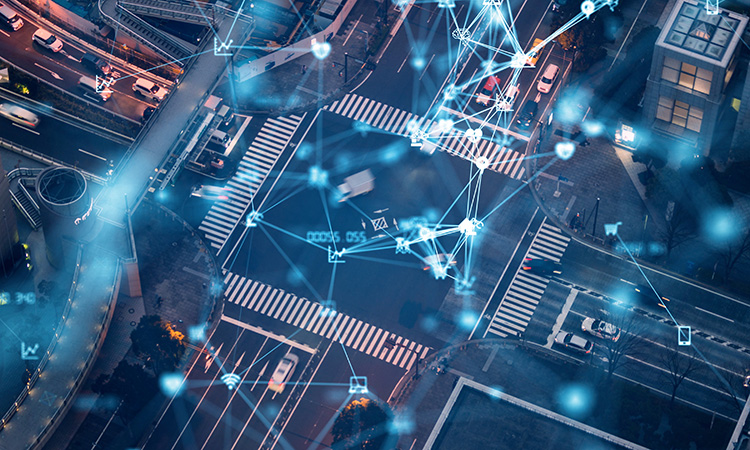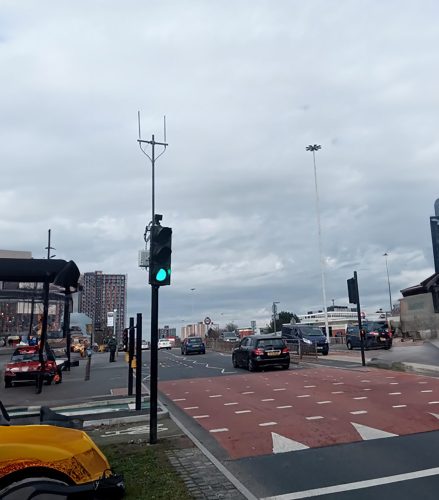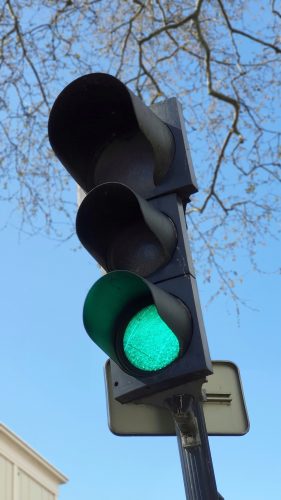for Intelligent TransportationSam Lee, Senior Innovation Officer at Transport for Greater Manchester, shared his insightful views on how 5G and digital connectivity solutions will revolutionize the way traffic is managed, improving the overall mobility experience.


5G and the growth of digital connectivity


Credit: Transport for Greater Manchester
As the development and adoption of smart city technologies accelerates, 5G and digital connectivity (LORAWAN, NBIoT, Wifi6, etc.) are becoming increasingly important to urban areas. Digital solutions leverage big data sources and artificial intelligence (AI) solutions to provide new ways to achieve unprecedented efficiencies and cost savings.
Over the past few years, the Department of Digital, Culture, Media and Sport (DCMS) and the Department of Science, Innovation and Technology (DSIT) through their 5GCREATE program have supported several key programs of activity to accelerate the adoption of new 5G use cases in applied innovation demonstration and trials. Trials in various sectors have proven to create real-world impact and benefits, but commercialization remains elusive. Engaging in this program is essential to develop a stack of different use cases utilizing the same connectivity backhaul, driving a better return on infrastructure investment.
Reliable, high-bandwidth connectivity has become even more important in the wake of the pandemic, particularly as flexible working continues. This has led to significant changes in people’s travel habits, reducing the need to travel and providing flexibility in how public and private services are accessed. A key consideration is whether investment in digital connectivity can be a key tool in achieving Greater Manchester’s net zero target.
What does this mean for the transport and mobility sector?
There are several use cases and applications for 5G and digital connectivity within the transport sector, and below are some of the areas Transport for Greater Manchester (TfGM) is looking at to deliver wider benefits:
- Connected cars: More and more new vehicles are equipped with huge numbers of sensors collecting terabytes of data, helping to manage the highway network in real time. In future, a Data-as-a-Service (DaaS) model will enable TfGM to better understand vehicle movements.
- Connected micromobility: New modes such as electric scooters and bikes offer a range of Internet of Things (IoT) sensors. Connectivity allows the solution to communicate in real time with traffic management systems to get information such as green waves and improve the customer experience.
- Autonomous Vehicles (AV): 5G’s low latency and low bandwidth will be critical for supporting infotainment use cases, as well as remote operation for control in edge-case scenarios.
- Artificial Intelligence (AI) Camera/CCTV Computer Vision: With the development of AI, any camera feed can be processed using Machine Learning (ML) capabilities to enhance its capabilities.
5G Smart Junction and GMCA LFFN


Credit: Transport for Greater Manchester
One of the key use cases TfGM has developed and implemented to date is 5G Smart Junctions, funded as part of the DCMS/DSIT 5GCREATE programme. The aim of the project is to optimise traffic signals using AI enhanced with 5G communications at several junctions in Salford. Video analytics sensors will be used to detect vehicle, cyclist and pedestrian speeds, routes, journey times and queueing data, which will then be fed into an AI model using 5G technology, sending the data to the cloud. Using 5G to reduce the civil engineering costs of expensive cable routes between traffic signal controllers and between sensors and controllers will future proof connectivity needs and remove the need for ADSL connections at each controller.
The project created a publicly owned private 5G network that provides a consistent, secure and low latency 5G network with smart junction sensors. The data generated was sent back in real time and fed into an AI traffic management system. The project has demonstrated levels of efficiency savings and improvements in junction operations. More importantly, it reduces traditional infrastructure costs associated with fixed communications infrastructure. 5G connectivity allows evidence to be gathered on the role of digital technologies in utilising existing highway infrastructure more efficiently compared to traditional civil infrastructure deployments. The project itself has enabled a data-driven approach to achieving policy objectives, changing the focus from improving motor vehicle movement to improving the experience of other road users such as buses, pedestrians and cyclists.
The aim of this project was to create a scalable blueprint for regional scale deployment. It builds on the GMCA Local Full Fibre Network (LFFN) which connects 776 traffic signal sites within the Greater Manchester region. The goal is to provide 5G connectivity at some of these sites in our strategic corridors and enable rapid deployment of the technology and solutions for other connected locations. There is currently no single use case that can provide a return on investment, so further deployment is required to determine the business case for widespread deployment. In Greater Manchester, we aim to explore the concept of “stacking” use cases across sectors to maximise the impact and benefits of connectivity. This includes use cases in sectors such as health, energy and education.
What does the future hold, and what role should connectivity play?
As the world moves to 5G and new connected place applications, the risk of opening up new attack vectors is a risk that must always be considered.”
As connected place applications become more dependent on real-time data to operate, they will require a level of connectivity resiliency beyond 5G or fixed connections. Developments in space, location technology, and communications can help provide secure alternatives and added value to connectivity. Some of these opportunities and risks are outlined in a recently published report by the Geospatial Commission:1.
As the world moves to 5G and new connected place applications, the risk of opening up new attack vectors is a risk that must always be considered. What considerations must be made to enable rapid deployment of innovation with 5G whilst maintaining a secure network? Should city regions consider segmented digital infrastructure to only allow connectivity for local critical infrastructure applications, such as traffic signals? The NCSC is developing new guidance and principles for the public sector to consider when considering the rollout of connected place applications.2.
References
- Finding a way forward: Location data enabling connected and automated mobility – GOV.UK (www.gov.uk)
- Cyber Security Principles for Connected Places – NCSC.GOV.UK

 Sam Lee I am Senior Innovation Officer at Transport for Greater Manchester (TfGM).
Sam Lee I am Senior Innovation Officer at Transport for Greater Manchester (TfGM).


